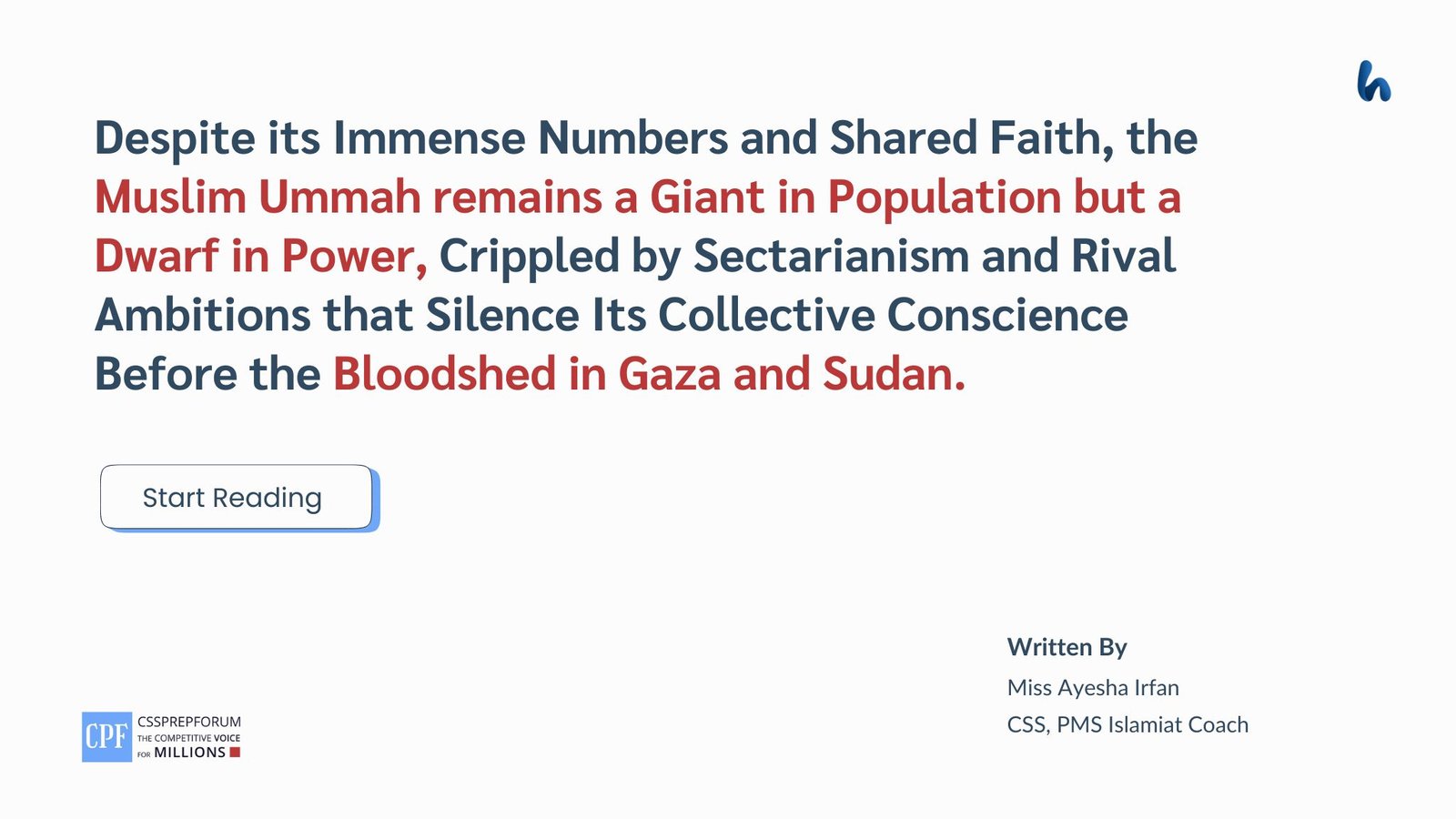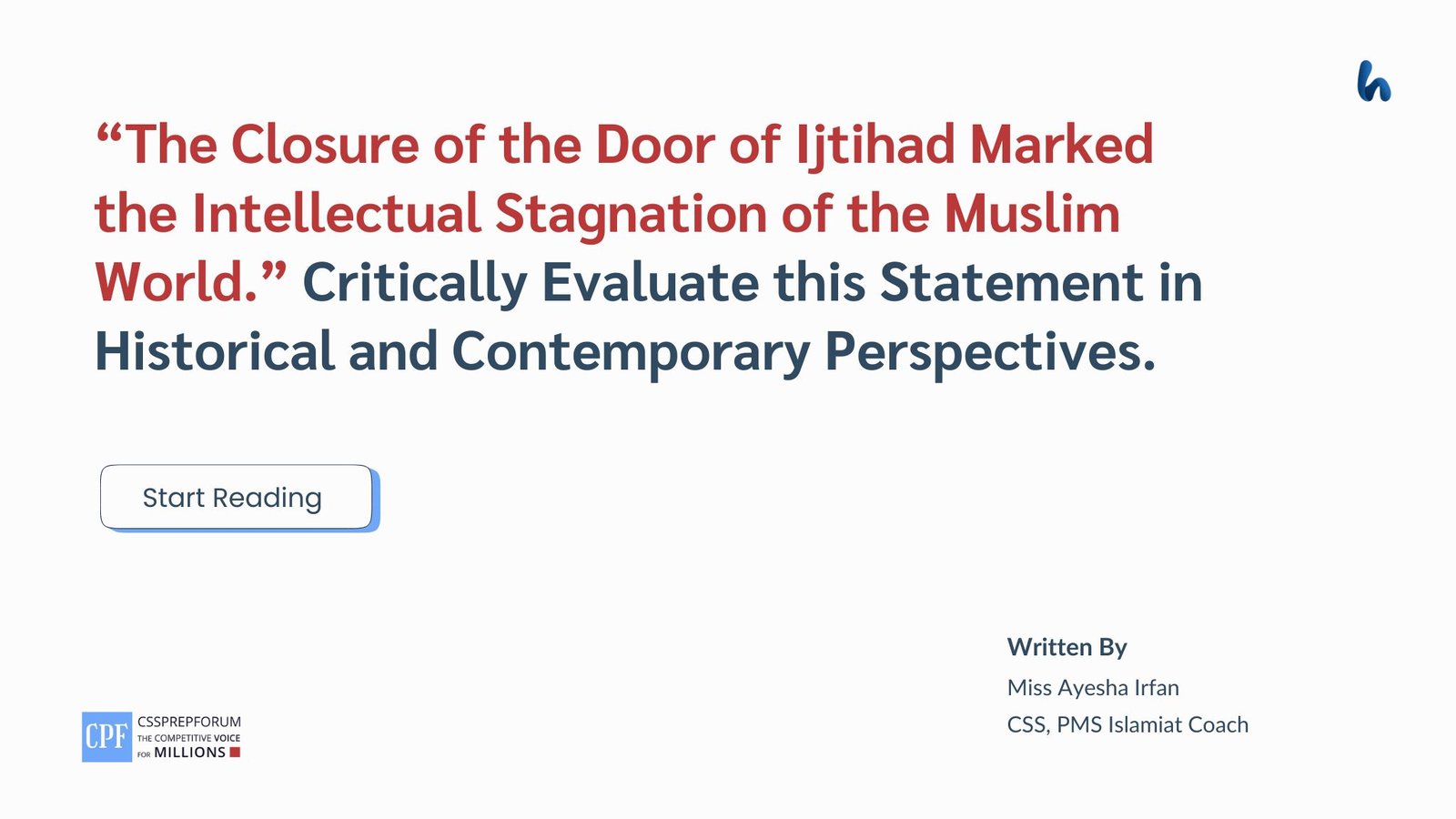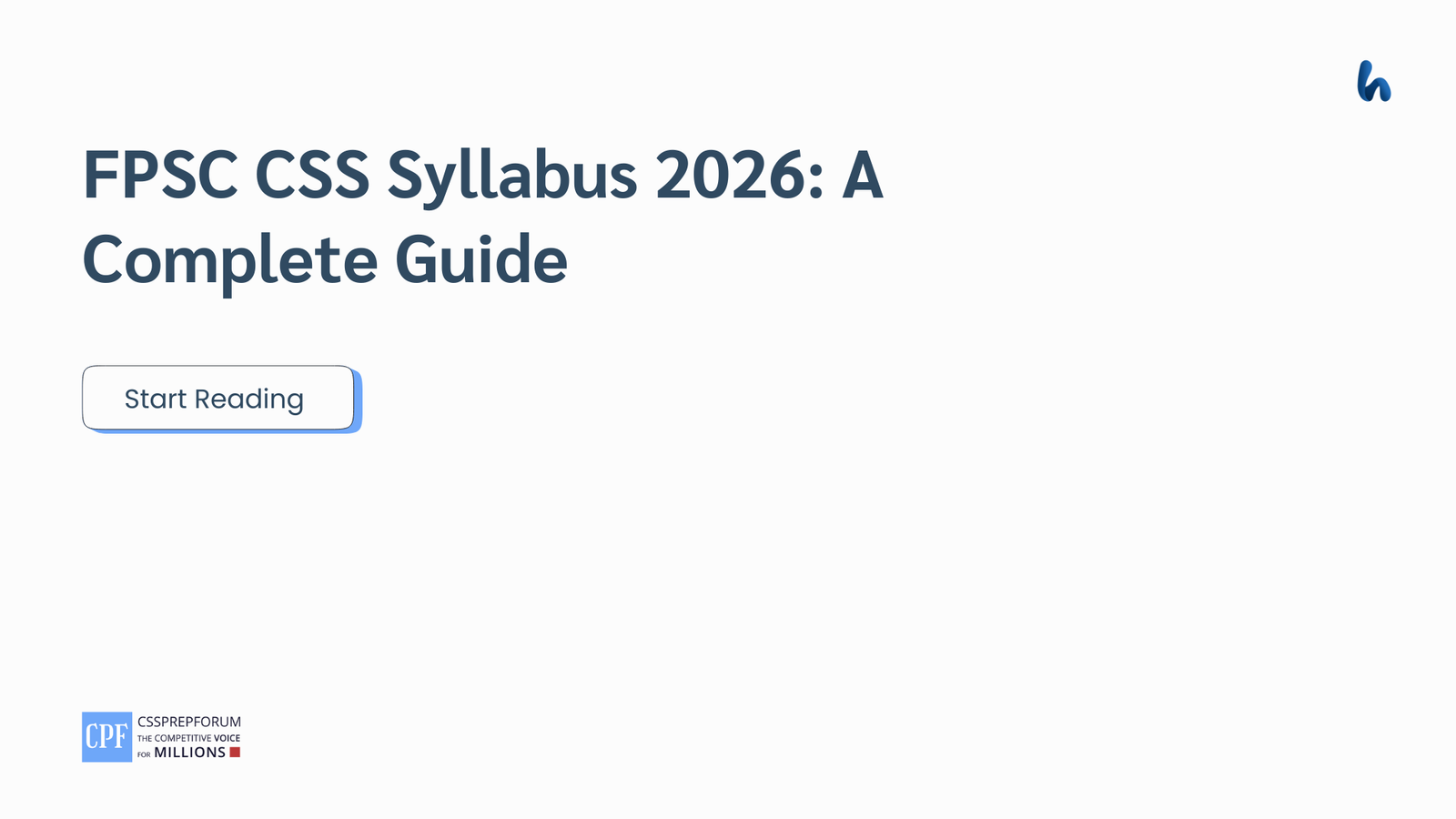CSS 2023 Solved Current Affairs Past Papers | CPEC: Advantages, Challenges and Prospects
The following question of CSS Current Affairs 2023 is solved by Sir Ammar Hashmi, the best Current Affairs Coach, on the guided pattern of Sir Syed Kazim Ali, which he taught to his students, scoring the highest marks in compulsory subjects for years. This solved past paper question is uploaded to help aspirants understand how to crack a topic or question, how to write relevantly, what coherence is, and how to include and connect ideas, opinions, and suggestions to score the maximum.

Question Breakdown
This question requires a brief explanation of CPEC which has lately become a game changer for Pakistan and whole of the region. It also requires several advantages, disadvantages and future prospects of the project.
Outline
1-Introduction
2-China-Pakistan Economic Corridor (CPEC) & Economic Regionalization
3-Potential Advantages of CPEC
- ✓ Economic Uplift
- ✓ Development of Communication Network
- ✓ Regional Connectivity
- ✓ Investment Opportunities
4-Challenges and Concerns Associated with CPEC
- ✓ Political and Security Issues
- ✓ Economic Sustainability
- ✓ Environmental Impact
- ✓ Geopolitical rivalries
5-Future prospects of CPEC
- ✓ Long-term Economic Growth
- ✓ Strengthening regional cooperation
- ✓ Expansion of Gwadar Port and technological advancement
- ✓ Enhancing Global Economic Positioning
6-Critical Analysis
7-Conclusion

Answer to the Question
Introduction
The CPEC is regarded as a game-changer for Pakistan, which will reshape the country’s economic landscape through large-scale investments, multiple energy projects, and industrial zone development. CPEC is a project of approximately $62 billion, which encompasses road networks, energy sector enhancements, the establishment of Special Economic Zones (SEZs), and railway lines. It will modernize Pakistan’s economy, stimulate its industry, and reduce poverty, which is regarded as a transformative force for the country. The liabilities incurred by Pakistan because of CPEC-related investment raise issues related to fiscal sustainability, particularly if the revenues from infrastructure and Industrial projects are lower than expected. High external debt for funding CPEC projects may indulge Pakistan into a debt trap which may put serious constraints on Pakistan’s policy options in the future. Besides, political risks, internal instabilities in Pakistan, and regional conflict could offer challenges and disrupt investors’ confidence in the project.
China-Pakistan Economic Corridor (CPEC) & Economic Regionalization
China-Pakistan Economic Corridor: the CPEC is a flagship project of the Belt and Road Initiative (BRI). It is basically a multi-billion-dollar investment aimed at expanding connectivity between Pakistan’s Gwadar Port and China’s Xinjiang region. CPEC is regarded as a game-changer for Pakistan, which will reshape the country’s economic landscape through large-scale investments, multiple energy projects, and industrial zone development. CPEC is a project of approximately $62 billion, which encompasses road networks, energy sector enhancements, the establishment of Special Economic Zones (SEZs), and railway lines. It will modernize Pakistan’s economy, stimulate its industry, and reduce poverty, which is regarded as a transformative force for the country. CPEC’s most critical investment is infrastructure development, i.e., constructing motorways, railways, and highways such as the Multan-Sukkur Motorway, the Karakoram Highway, and the Main Line-1 (ML-1) railway upgrade. These projects will improve internal and external connectivity and will reduce transportation costs. World Bank reported that these transport networks will reduce logistics costs by up to 30%, which will enhance the competitiveness of Pakistani exports in global markets. Additionally, the multiple energy projects have also been instrumental in overcoming chronic energy shortages in Pakistan. Over thirteen energy projects have been completed under CPEC by 2023, facilitating approximately 7,000 megawatts of electricity to the national grid of Pakistan. Its strategic and geopolitical positioning makes it a trade center between Asia and the Middle East, which enhances Pakistan’s global standing. It also strengthens Pakistan’s ties with China, as well as other countries providing political and economic leverage on the international stage.

Source: Taylor&Francis Online
Potential Advantages of CPEC
- ✓ Economic Uplift:
Since the launch of the China-Pakistan Economic Corridor (CPEC) in 2015, it has brought enormous economic benefits to Pakistan. It acted as a catalyst for employment generation, trade enhancement, and industrial growth. Statistics say that over $62 billion has flowed to Pakistan from China for different infrastructure and economic projects, and more than 75,000 employment opportunities have been created under Special Economic Zones (SEZs). Only Rashakai SEZ has attracted more than $1 billion in investment, and all of them collectively contributed to the great surge in Pakistan’s FDI to approximately 60%. Overall, CPEC has improved Pakistan’s gross domestic production by 2-3% annually.
- ✓ Development of Communication Network:
Infrastructure development is the backbone of any socio-economic stable society. Some of the infrastructure projects under CPEC include the Multan-Sukkur Motorway and the Karachi-Lahore Motorway, which reduced travel costs and time significantly. The Gwadar Port in Balochistan is a prime example of how CPEC boosted economic prospects. Gwadar, after being fully operational, has the potential to handle 300 to 400 million tons of cargo every year, which positions Pakistan as a major player in international trade. It is stated that
“CPEC is a trailblazer for development and an engine for growth, driving Pakistan towards economic prosperity.”
Chinese President Xi Jin Ping
- ✓ Regional Coordination:
CPEC has connected China with Pakistan, Iran, and Afghanistan, enhancing regional connectivity and linkage. Infrastructure development is one of the key investment plans under CPEC, such as Gwadar Port, which serves as an important node for maritime trade. It will connect landlocked regions of Western China and Central Asia to the Arabian Sea to provide them easier access globally, with an increased capacity of 400 million tons of cargo every year. markets. It also has energy pipeline connectivity projects like, for example, Hub Power Plant and Port Qasim Coal Power Plant, having the potential to cover Pakistan’s energy needs as well as energy export with neighbors. Former Prime Minister Imran Khan mentioned in one of his speeches that “CPEC is not only about bilateral relations between China and Pakistan; it is about connecting the region and uncovering the potential for growth and development across the whole of Asia.”
- ✓ Investment Potential:
CPEC is the hub of investment opportunities, for both nationals and foreigners. As it primarily focuses on infrastructure, energy projects, and special economic zones, it is open to investors in the same domains; for instance, with a portfolio of more than $62 billion, it has massively drawn investors to add value to these projects because of their high demand. Similarly, SEZs with $1 billion in investments make it an attractive proposition for investors in IT, manufacturing, and textiles. Likewise, improved infrastructure will increase the tourism sector and regional connectivity. CPEC has unlocked agriculture, energy, infrastructure, tourism, technology, and many other sectors for investments. A famous economist commented on CPEC, saying,
“CPEC is a golden opportunity for investors; it will provide a platform for growth and innovation across multiple sectors for nationals and foreigners.”
Challenges and Concerns Associated with CPEC
- ✓ Political concerns and Security challenges:
CPEC has instigated debates within Pakistan on the distribution of its profit across provinces concerning economic disparity. For instance, Baluchistan and KPK fear the supremacy of Punjab with respect to this project, which led to domestic political tensions. Not only this, it is also a point of concern regionally and internationally, such as, India openly opposed it as the corridor is passing through the disputed region of Gilgit-Baltistan. Moreover, on the security front, several times, the project has been targeted by militants, especially in Balochistan. In response, the government established the Special Security Division (SSD), which consists of a force dedicated to protecting CPEC assets and Chinese nationals. Apart from this, its financial model has gripped a lot of concentration and criticism, which highlighted Pakistan’s debt sustainability. UN and other International organizations highlighted the debt stress of CPEC on Pakistan, which has contemporarily increased the external debts.
- ✓ Economic Sustainability:
The projects under CPEC are mainly financed through Chinese loans, which adds to the country’s debt burden. This increase has raised serious concerns about Pakistan’s debt sustainability, which is already entrenched in balance-of-payment crises and IMF bailout packages. The profitability of infrastructure and energy projects will not materialize immediately, through which Pakistan is told to curb its crisis state. Export competitiveness is also another critical issue. In order to generate any benefits from CPEC, the country should leverage the new connectivity and infrastructure to drive exports. Nevertheless, Pakistan exports only a limited number of products, where more than 60% of them are textiles. The country could also fail to harness the potential returns in the business related to the CPEC trade if it does not diversify its export products and export markets. Finally, political stability and governance structures are also the main components having an influence on the sustainability of the CPEC projects. The instability of governments and changes in policy could eventually slow down the rate of project delivery.
- ✓ Environmental Impact:
CPEC aims to boost the economic growth of Pakistan through large-scale infrastructure investment for its development, which also poses significant environmental risks that should be controlled to ensure long-term sustainability. The expansion of these projects under CPEC contributes to increased greenhouse gases and local air pollution. Pakistan has already been struggling with bad air quality, mostly in urban areas, and the climatic conditions worsen if more energy is produced through fossil fuels. For instance, the Sahiwal coal power plant, which is among the CPEC-related energy projects, has been questioned on capacity utilization on one hand and on the other hand concerning its emission of sulfur dioxide and nitrogen oxides, which are damaging to human health. The national and international authorities are also concerned about water resources that have been strained because of CPEC-related development. It is evident that industrial activities that include, special economic zones SEZs may pollute water bodies if the best practice in waste management is not followed.
- ✓ Geopolitical Rivalries:
CPEC has also contributed to the growing of geopolitical rivalry and has raised concern especially in the issue of power agenda within the region. It raised a controversy in passing through Gilgit-Baltistan which is part of the Kashmir that is disputed between India and Pakistan. The Indian government has accused China of financing the construction to legitimize Pakistan’s control of the region. It was also associated with China’s strategic competition in Asia, as the USA raised voices about the negative implications of CPEC and BRI projects, claiming it as geographic imperialism of China. The same has been witnessed in the US strategy for the Indo-Pacific region and the Quad of India, Japan, and Australia, which are considered to counter China’s BRI. This larger geopolitical conflict has implications not only for the political development of CPEC but also for the perception of Chinese investments in other countries that are being accused of “debt-trap diplomacy.” Indeed, these political shifts affect the project’s business, its perception, and possible outcomes, putting it at the heart of political competition in Asia and in the global arena.
Future Prospects of CPEC
- ✓ Long-term Economic Growth:
China-Pakistan Economic Corridor (CPEC) has created a network of energy projects, infrastructures, and industrial economic zones, which aims to boost the economy of Pakistan. However, to achieve these goals in the longer term, the projects must focus on the challenges associated with CPEC, like, for example, equitable distribution to provinces, debt sustainability, and diversification of the economy. However, for its long-term implications for the economic dynamics of Pakistan, it is necessary to address fiscal sustainability that ensures the sustainability of liabilities associated with CPEC. With the investment in economic projects and revenue from trade and industry, Pakistan can easily dodge risky debts for establishing growth. It means that to maximize the social utility of the investment and reduce regional disparities, there should be standard policies of transparency, good governance, and project monitoring for CPEC to tender investment at every stage without any discrimination. Pakistan has an opportunity to win through CPEC – building a strong, sustainable, diversified, and self-sustaining economy.
- ✓ Strengthening of Regional Cooperation:
The China-Pakistan Economic Corridor (CPEC) has the promise of enhancing, solidifying, and evolving regional cooperation through better connectivity, trade, and economic cooperation within South Asia, Central Asia, and the Middle East. This connectivity can lead to the development of regional trading based on the interconnection to increase economic interdependence among neighboring countries. The construction of Gwadar Port under this project, through which the Central Asian states have direct access to the Arabian Sea is expected to increase flows between Central Asia and South Asia, providing countries such as Afghanistan, Uzbekistan, and Tajikistan cheap and effective connectivity to overseas markets. This web of controlling infrastructure and trade relations on a geopolitical level also strengthens diplomatic and economic dependence on one another, which forms the basis of regional identity. The regional cooperation created by CPEC will develop the region into a more stable, peaceful, and economically developed South and Central Asia.
- ✓ Expansion of Gwadar Port and technological advancement:
CPEC could make Pakistan a pivot in regional trade and technological development. Gwadar Port (constructed under CPEC) is situated in the vicinity of the Strait of Hormuz and provides direct access to the Arabian Sea; expanding this port will facilitate it to bear more vessels, construct additional berthing facilities, and improve port services. Changes in infrastructure status, customs procedures, and the creation of a free economic zone around Gwadar would promote international investment and attract multinationals to set up an operation logistics hub. Specifically, creating technology parks and incubation centers in megacities under CPEC will also encourage the generation of new ventures, technological institutes, and industries. These tech zones may include software development, cybersecurity, data analytics, and artificial intelligence (AI) that would host tech firms so as to make the country a regional technology hub. Moreover, the development of collaborative research initiatives in Pakistani and Chinese technology companies would enable technology transfer, capacity building, knowledge sharing and improving the technological sector and its sustainability locally. As a result, sustainable and long-term economic development in the technological hub of both Pakistan and the region with enhanced ability to compete for regional and international digital markets could be expected.
- ✓ Enhancing Global Economic Positioning:
Pakistan’s advantageous geographical location made this country nearly indispensable not only for trading between Asia and the Middle East but also for shifting trade between Asia and Europe, thus, it has all the chances to control the world economy with its hands. The sustainability undertakings in Gwadar and in the technology, sectors also help make a positive image of Pakistan internationally. Introducing more green energy plants, ensuring a lower carbon footprint, and establishing tech industries that would give back to the environment would bring Pakistan up to par with other nations on environmental issues while also enticing more international investment and cooperation in fields that are seen as priorities. This will be reciprocated with respect and cooperation with pro-environment partners globally. Through the development of multiple infrastructure, energy, and technology projects, Pakistan can make it grow as an economic power. It would help the country to gain a new diplomatic power base in the global system. In such a way, concentrating on the modernization and regional integration tasks, CPEC can become the basis for Pakistan’s positioning in the international arena as a well-recognized state.
Critical Analysis
Under China-Pakistan Economic Corridor (CPEC) Pakistan has the great opportunity to develop its economy and to change the regional and international political power map of this region. However, closer examination of these opportunities indicates the potential that can be harnessed to support the project now and, in the future, as well as the challenges that, if not managed well, could determine the fate of the project in the long run. However, to record sustainable success, CPEC has certain challenges which need to be worked on effectively. The liabilities incurred by Pakistan because of CPEC-related investment raise issues related to fiscal sustainability, particularly if the revenues from infrastructure and Industrial projects are lower than expected. High external debt for funding CPEC projects may indulge Pakistan into a debt trap which may put serious constraints on Pakistan’s policy options in the future. Besides, political risks, internal instabilities in Pakistan, and regional conflict could offer challenges and disrupt investors’ confidence in the project.
Conclusion
CPEC symbolizes great opportunities in terms of the economic and geopolitical future of Pakistan. Its success is contingent on the right policies and efficient implementation. In order to fully harness CPEC for the benefit of the people, Pakistan needs to ensure growth without compromising on sustainability, which requires diversifying its economy, controlling external and domestic debt, and following sustainable development initiatives. Proper and transparent management, along with business-friendly policies, will be essential for the CPEC to unlock its intrinsic potential for Pakistan. However, in a strategic manner, CPEC has the potential not only to foster sustainable economic development and modernization of the country but, at the same time, to increase Pakistan’s status as the regional and global actor in the interconnected world as an economic and transit hub.
CSS Solved Past Papers’ Essays
Looking for the last ten years of CSS and PMS Solved Essays and want to know how Sir Kazim’s students write and score the highest marks in the essays’ papers? Then, click on the CSS Solved Essays to start reading them.
CSS Solved Essays
CSS Solved General Science & Ability Past Papers
Want to read the last ten years’ General Science & Ability Solved Past Papers to learn how to attempt them and to score high? Let’s click on the link below to read them all freely. All past papers have been solved by Pakistan’s top CSS GSA coach having the highest score of their students.
General Science & Ability Solved Past Paper












